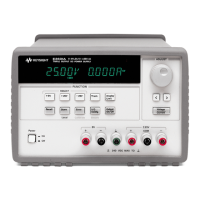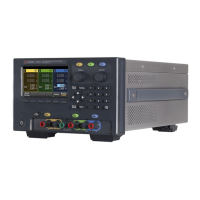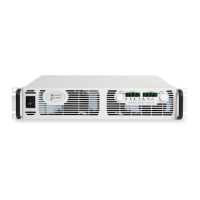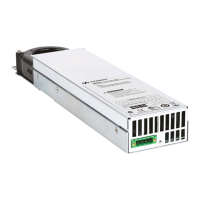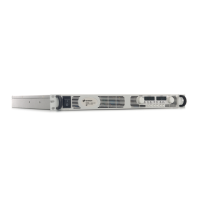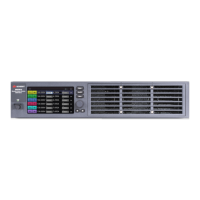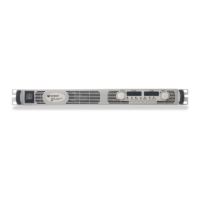Calibration Procedures 1
Keysight E3632A Service Guide 29
CV line regulation
This test measures the immediate change in output voltage that results from a
change in AC line voltage from the minimum value (10% below the nominal input
voltage) to maximum value (10% above the nominal input voltage).
1 Turn off the power supply and connect a digital voltmeter between the (+) and
(–) terminals of the output to be tested as shown in Figure 1-1.
2 Connect the AC power line through a variable voltage transformer.
3 Turn on the power supply. Select the 30 V/4 A range, enable the output, and
set the display to the limit mode. When the display is in the limit mode,
program the current to the maximum programmable value and the voltage to
full rated value (30.0 V).
4 Operate the electronic load in constant current mode and set its current to 4.0
A. Check that the CV annunciator remains lit. If not lit, adjust the load so that
the output current drops slightly until the CV annunciator lights.
5 Adjust the transformer to low line voltage limit (104 Vac for nominal 115 Vac,
90 Vac for nominal 100 Vac, or 207 Vac for nominal 230 Vac). Record the
output reading on the digital voltmeter.
6 Adjust the autotransformer to high line voltage (127 Vac for nominal 115 Vac,
110 Vac for nominal 100 Vac, or 253 Vac for nominal 230 Vac). Record the
voltage reading on the digital voltmeter immediately. The difference between
the digital voltmeter readings in steps 5 and 6 is the CV line regulation. The
difference of the readings during the immediate change should be within the
limit of 5 mV.
Normal mode voltage noise (CV ripple and noise)
The normal mode voltage noise is in the form of ripple related to the line
frequency plus some random noise. The normal mode voltage noise is specified as
the rms or peak-to-peak output voltage in a frequency range from 20 Hz to 20
MHz.
1 Turn off the power supply and connect the output to be tested as shown in
Figure 1-1 to an oscilloscope (AC coupled) between (+) and (–) terminals. Set
the oscilloscope to AC mode and bandwidth limit to 20 MHz. Connect a
resistive load (7.5 Ω) as shown in Figure 1-1.
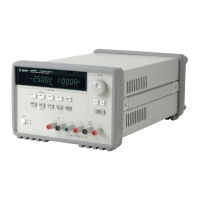
